Perilla or Kkaennip blanched then sauteed in the simplest way but is such a wonderful way to enjoy the minty herbaceous flavors of the popular Korean plant. This can also be the Green color namul in the 3 color namul.
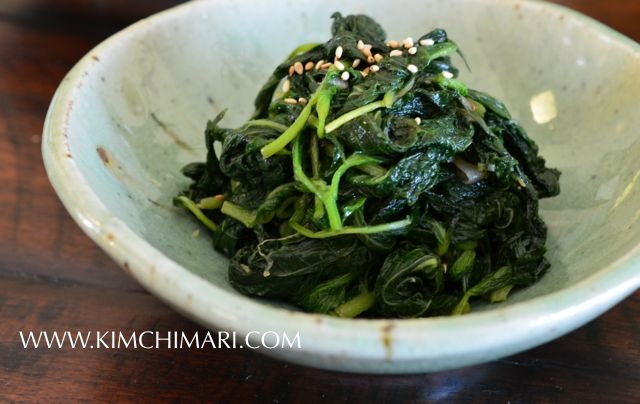
What is Perilla
Perilla (Perilla frutescens v. frutescens) is a very popular and common herb that Koreans love to cook with. It belongs in the mint family Lamiaceae. Koreans love to eat these for ssam (wrap) and they add a very mild minty and basil-like flavor to many dishes. You can also make pickles (kkaennip jangahjji) and use them as garnish. Excellent as microgreens on salads or bibimbap.
In my 2nd post about Korean Samsaek Namul (Three color vegetables), I will show how to make a green Kkaetnip namul (깻잎 나물) or Sauteed Perilla Leaves. If you have a perilla plant that is growing out of control in your garden or if you just simply have too much perilla leaves (kkaetnip), this will be a perfect dish to make. It is a great way to eat a lot of perilla leaves because it uses a good part of the plant (stem and all) without having to pick individual leaves.
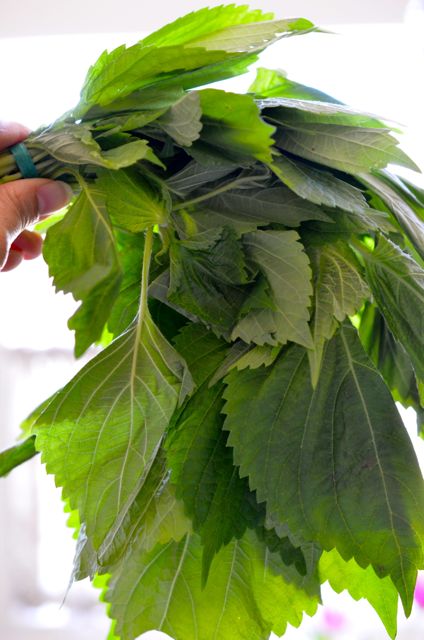
If you have just the leaves, you can use that instead.
Other GREEN NAMUL besides Perilla
Besides the green Kkaetnip Namul, you can make Chwinamul (Sauteed Aster Scaber) or Spinach Namul. They all work as the Green Namul in the 3 color set.
CAN I GROW Perilla?
Yes, you can! You can easily grow these from seeds in the ground or in pots and once you grow them, they will most likely reseed year after year. To buy the seeds, you can search for Perilla seeds online.
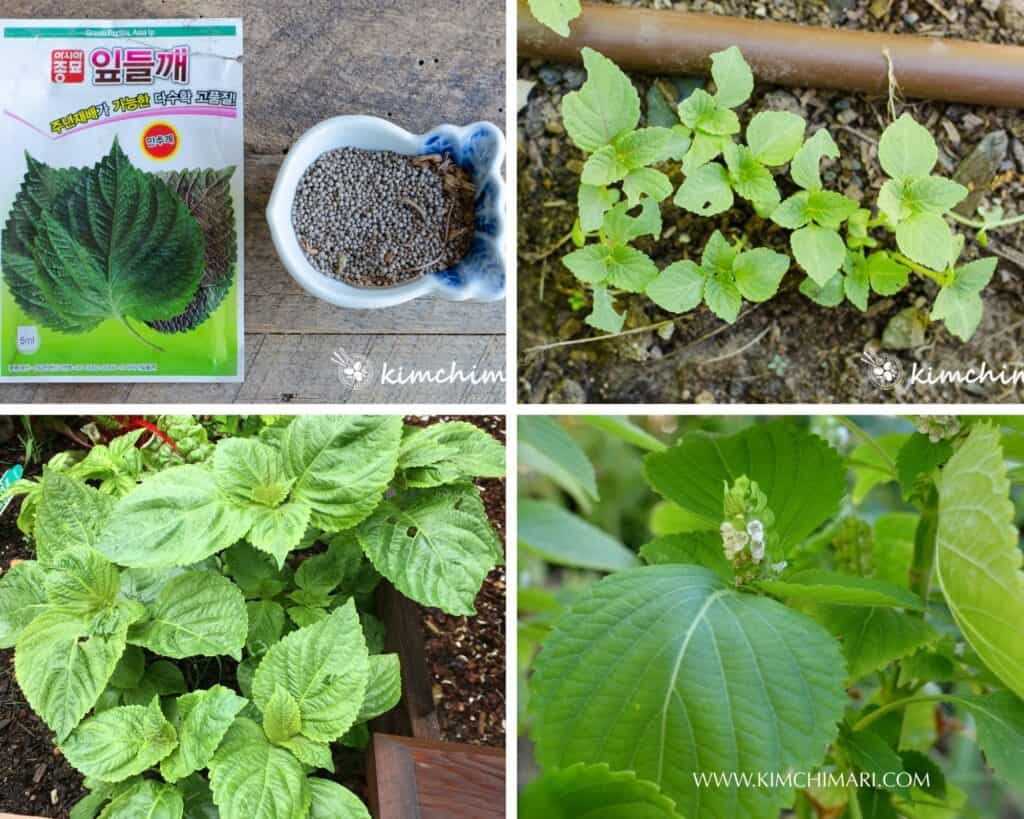
Now, for a little bit of a history lesson on Samsaek Namul…The dish comes from the tradition of Koreans paying respect to their ancestors by preparing an offering of a table full of food and the descendants bowing in front of the table. There is a very complicated protocol on how to prepare the table of offerings – so complicated that there is even an App developed to help the clueless young Koreans prepare the 제사 Jaesa (offering).
5 rows with odd number of dishes per row, fish to the east, meat to the west, rice and soup on the north end (where the ancestral ghosts will sit) and desserts like yakwa and fruits (in odd numbers) at the south end. Nothing spicy or red colored (hmm.. guess ghosts can’t eat spicy foods?? haha),.. the rules go on and on..Of these rules, there is one rule that says you must have a plate of 3 colored vegetables or Samsaek Namul of white, brown and green.
UPDATE on Jesa Post
I was surprised to find perilla leaves in bunches at our local grocery store, so it was perfect! This was one bunch which was probably about 10 stems?
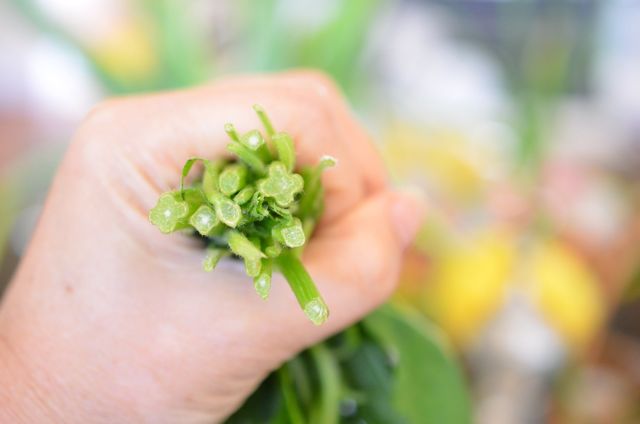
Servings: 2 Cooking Time: 10 min Difficulty: easy
Ingredients
- 4 oz fresh perilla leaves or top part of plant (2 bunches)
- 1 tsp Guk kanjang/Gook Kanjang(korean soy sauce for soups) – see K ingredients
- 1 tsp perilla seed oil (들기름 deul gireum) or sesame oil
- 1/2 tsp chopped garlic
- 1/4 onion, thinly sliced (optional)
- sesame seeds or perilla seeds
- Wash and clean perilla leaves. If you have the whole top part of the plant, take off leaves and tender part of the plant. Discard any thick stems that do not break easily.
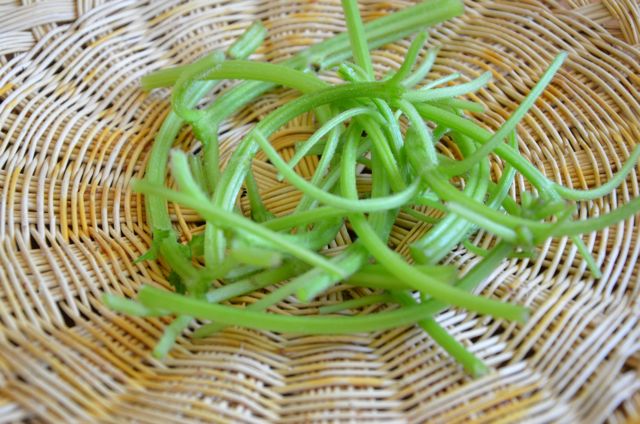
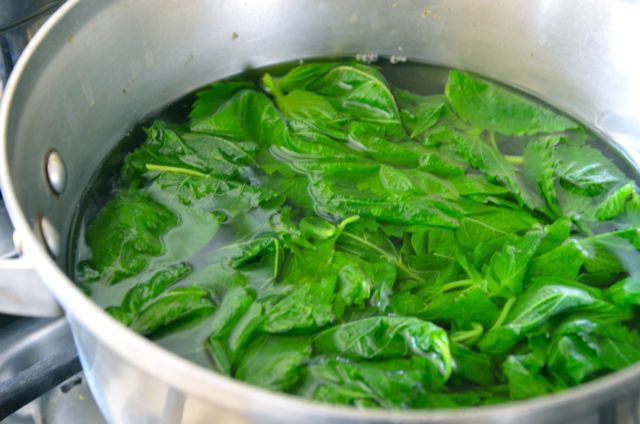

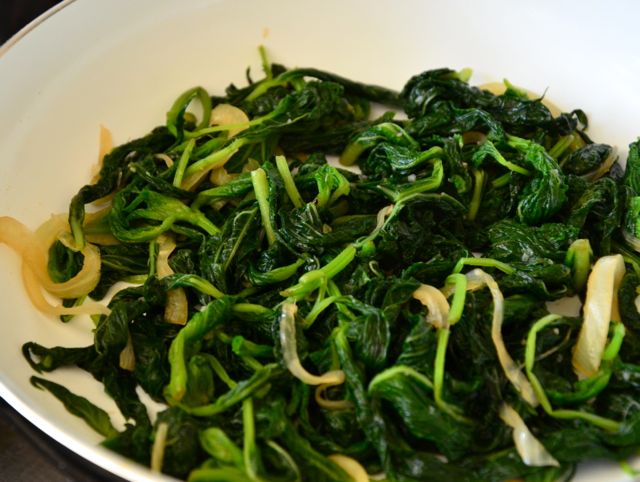
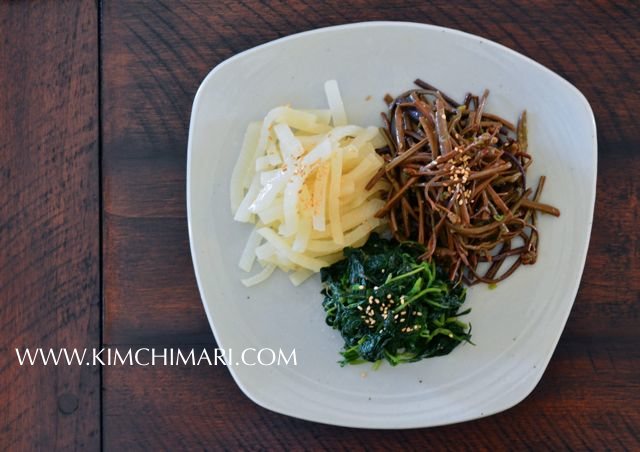
OTHER KOREAN NAMUL
For WHITE NAMUL, you can make Radish Namul or Doraji Namul and for BROWN, Gosari (Bracken Fiddleheads) is the standard one to make if you want to complete your 3 color namul set. If you want to see how a video of how to make the 3 kinds of namul – Doraji, Gosari and Chwinamul, you can watch THE VIDEO
Three Color Vegetables (Samsaek Namul) – Green
Ingredients
- 4 oz fresh perilla leaves or top part of plant (2 bunches)
- 1 tsp Guk kanjang/Gook Kanjang (Korean soy sauce for soups)
- 1 tsp perilla seed oil (deul gireum or sesame oil)
- 1/2 tsp chopped garlic
- 1/4 onion (thinly sliced, optional)
- Sesame seeds or perilla seeds
Instructions
- Wash and clean perilla leaves. If you have the whole top part of the plant, take off leaves and tender part of the plant. Discard any thick stems that do not break easily.
- Prepare a pot of boiling water with salt added and an ice bath. Blanch perilla by putting perilla leaves in boiling water for 10-30 seconds depending on how tender they are. Do not overcook.
- Once perilla leaves are blanched, quickly remove from boiling water and plunge them into an ice bath to stop cooking.
- Grab a handful of blanched perilla and form a ball in your hand. Squeeze out any excess water.
- Season perilla leaves by adding perilla oil/sesame oil, guk kanjang and garlic. Massage with your hands to make sure leaves are seasoned well.
- Saute seasoned perilla in a non-stick frying pan over medium low heat for 1 – 2 min until they are gently cooked. If they look too dry, add 1 Tbs of water and cook some more until most of the liquid has evaporated. I added some thinly sliced onions for extra flavor here but that’s totally optional.
- Sprinkle sesame seed or perilla seeds and that’s all you need to do!
- Enjoy Kkaetnip Namul (Sauteed Perilla Leaves) as a side dish to any meal or make Traditional Bibimbap by adding some other wonderfully healthy and delicious Korean namuls such as Kongnamul, Radish Namul, Gosari Namul, Shikeumchi (Spinach) Namul, Doraji Namul and more.
Tips & Notes:
Nutrition Information:
Enjoy Kkaetnip Namul (Sauteed Perilla Leaves) as a side dish to any meal or make Traditional Bibimbap by adding some other wonderfully healthy and delicious Korean namuls such as Kongnamul, Radish Namul, Gosari Namul, Shikeumchi (Spinach) Namul, Doraji Namul and more.
Note about Perilla Oil or Deul gireum(들기름) :
Korean Deul gireum/Deul gireum is oil made from pressing the perilla seeds. It has a stronger nuttier taste than sesame seeds and has a minty, anise flavor that some people find it too strong. Even among Koreans, you either love it or your don’t. I love it, my husband doesn’t. But if you can get it, by all means try it. It also has great health benefits – very high in Omega 3 and also contains Omega 6 and Omega 9 fatty acids.
Here are two other colors – BROWN Gosari Namul (fiddlehead ferns) and WHITE Radish Namul.
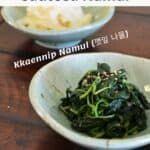
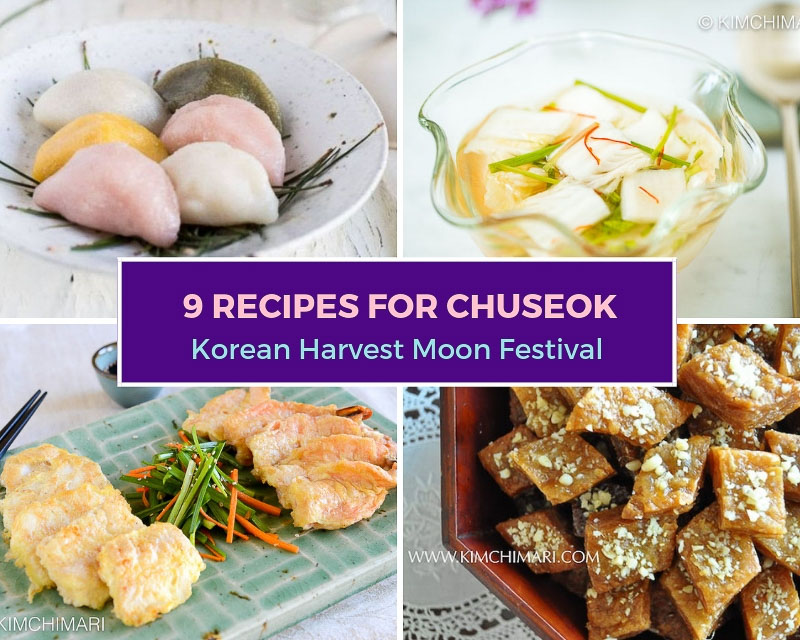
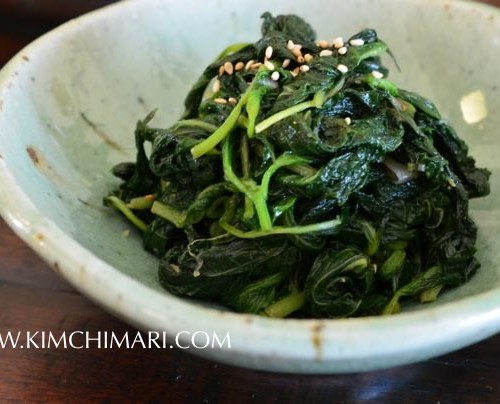
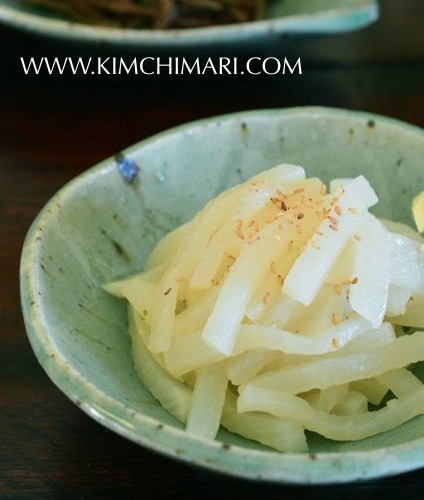

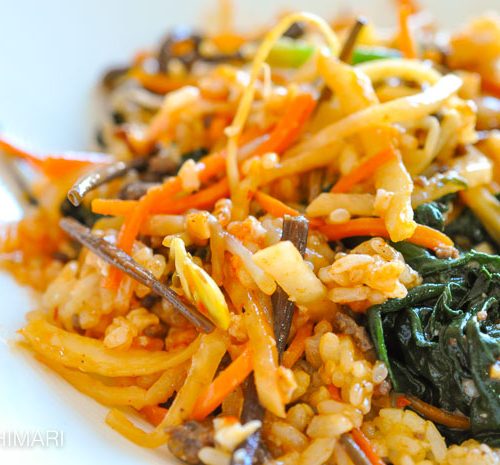
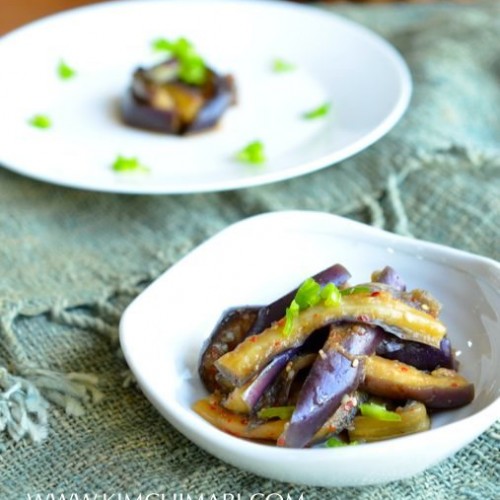
















Wonderful insights and recipes that are a joy to make. Thank you!
Thank you for the great review!
A friend is growing perilla for seed and I have been fortunate to be gifted much to experiment with. Till now I have only pickling them in tamari, honey and Chili. Thanks for reminding me of this other simple use of perilla and I will bring it “home”too. Thanks
Yes, it is very simple to do and you can use SOO much of perilla it’s pretty crazy. A basket full just becomes a handful.. glad you found it! Thanks for leaving me a comment.
I love perilla leaves — I’ve only ever eaten them raw, as a decoration on some sushi platters. I never see them to buy them for home use — I’ll just have to find a seed source and grow my own! This looks like a great dish!
Thank you!! Yes, I also LOVE perilla leaves and as I said, growing them is so easy. Recently I saw a friend who grew them in pots (10 large pots, 2 per pot?) and she was eating them everyday. You must try them cooked – it is milder in taste but oh so good with rice. If guk kanjang is not available, I am thinking you can use a little bit of regular soy sauce and a bit of fish sauce. They sell perilla seeds online so I’m sure you can get them quite easily. Good luck!